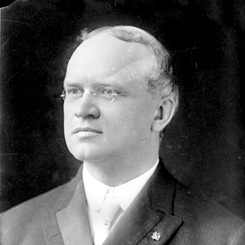
The Thanksgiving holiday
November 28, 1940
On this date, Representative Allen Treadway of Massachusetts made a plea on the House Floor for Congress to set the last Thursday of November as the legal holiday for Thanksgiving. On Thursday, November 26, 1789, President George Washington issued a proclamation for “a day of public thanksgiving and prayer.” Beginning in 1863, President Abraham Lincoln encouraged Americans to recognize the last Thursday of November as “a day of Thanksgiving.” A few years later in 1870, Congress followed suit by passing legislation making Thanksgiving (along with Christmas Day, New Year’s Day, and Independence Day) a national holiday. However, unlike the other holidays in the bill, the President had the discretion to set the date for Thanksgiving. With few exceptions, each President until Franklin D. Roosevelt followed Lincoln’s lead by declaring the last Thursday of November a national day of thanks. In the midst of the Great Depression in 1939, President Roosevelt moved Thanksgiving to the third Thursday of November in an attempt to extend the Christmas shopping season to help suffering businesses. Despite widespread criticism from many who had grown accustomed to the tradition of celebrating Thanksgiving later in November, the President moved up the holiday again in 1940. Some Members expressed frustration on the House Floor. “I feel the example which Massachusetts and New England offer in the retention of longstanding custom should be given very careful consideration before ruthlessly permitting it to be sacrificed for mercenary considerations,” Treadway remarked. On January 3, 1941, Representative Earl Michener of Michigan introduced House Joint Resolution 41 to set the last Thursday of November for the Thanksgiving holiday. “The rather universal sentiment seems to be that we should return to the old custom of the last Thursday in November as Thanksgiving Day,” Michener observed, “not only in honoring a custom as old as our national history but it will mean a restoring of order to what has been confusion to many who have to deal with this problem as a holiday season.” The House eventually passed Michener’s bill on October 6, 1941, and President Roosevelt signed it into law late that December, to take effect the following year.
Related Highlight Subjects
Cite this Highlight
Office of History and Preservation, Office of the Clerk, http://clerk.house.gov/art_history/highlights.html?action=view&intID=429, (December 07, 2010).For Additional Information
Office of History and Preservation(202) 226-1300
history@mail.house.gov


